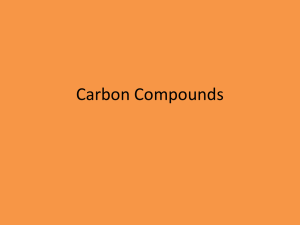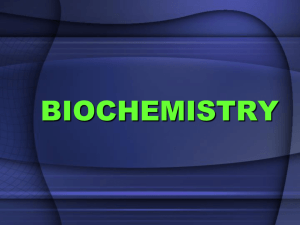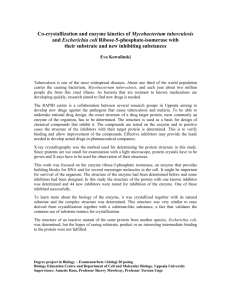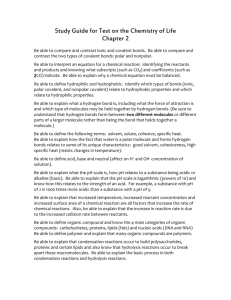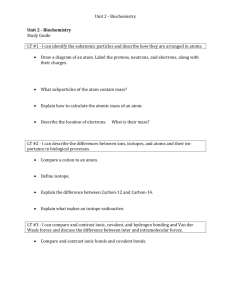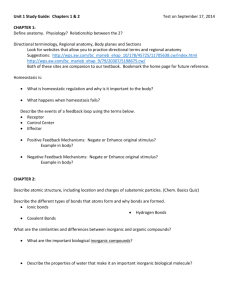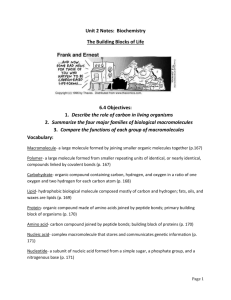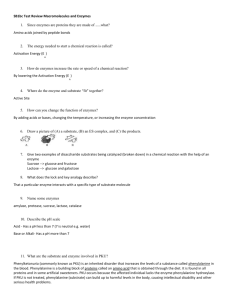Unit 1 homework key
advertisement
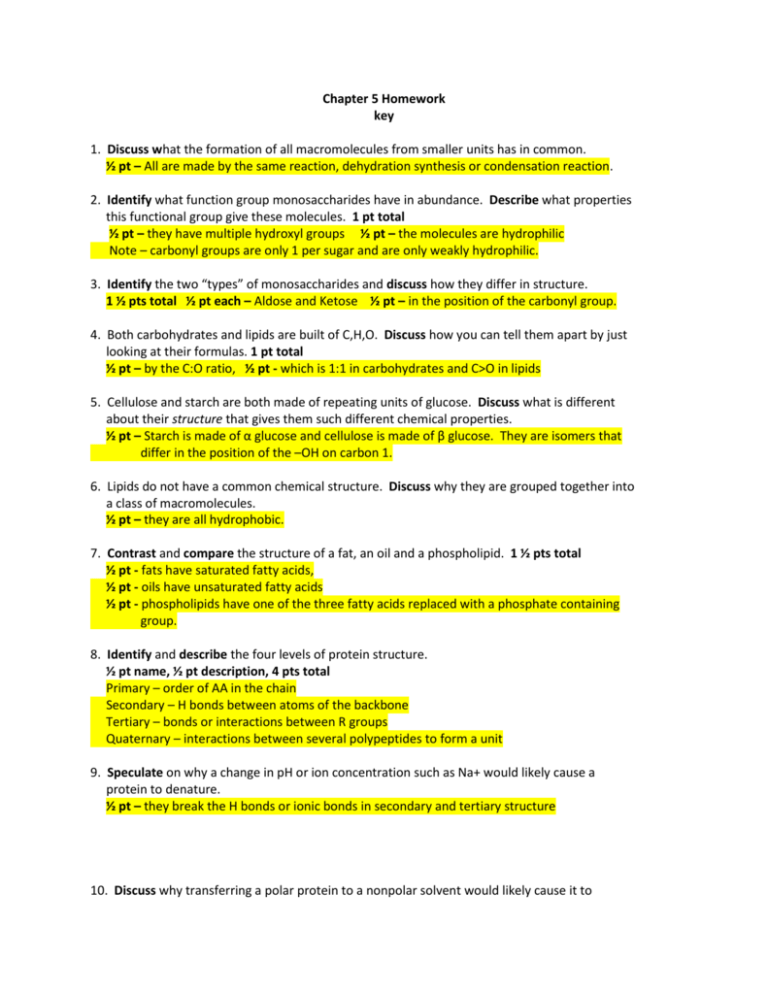
Chapter 5 Homework key 1. Discuss what the formation of all macromolecules from smaller units has in common. ½ pt – All are made by the same reaction, dehydration synthesis or condensation reaction. 2. Identify what function group monosaccharides have in abundance. Describe what properties this functional group give these molecules. 1 pt total ½ pt – they have multiple hydroxyl groups ½ pt – the molecules are hydrophilic Note – carbonyl groups are only 1 per sugar and are only weakly hydrophilic. 3. Identify the two “types” of monosaccharides and discuss how they differ in structure. 1 ½ pts total ½ pt each – Aldose and Ketose ½ pt – in the position of the carbonyl group. 4. Both carbohydrates and lipids are built of C,H,O. Discuss how you can tell them apart by just looking at their formulas. 1 pt total ½ pt – by the C:O ratio, ½ pt - which is 1:1 in carbohydrates and C>O in lipids 5. Cellulose and starch are both made of repeating units of glucose. Discuss what is different about their structure that gives them such different chemical properties. ½ pt – Starch is made of α glucose and cellulose is made of β glucose. They are isomers that differ in the position of the –OH on carbon 1. 6. Lipids do not have a common chemical structure. Discuss why they are grouped together into a class of macromolecules. ½ pt – they are all hydrophobic. 7. Contrast and compare the structure of a fat, an oil and a phospholipid. 1 ½ pts total ½ pt - fats have saturated fatty acids, ½ pt - oils have unsaturated fatty acids ½ pt - phospholipids have one of the three fatty acids replaced with a phosphate containing group. 8. Identify and describe the four levels of protein structure. ½ pt name, ½ pt description, 4 pts total Primary – order of AA in the chain Secondary – H bonds between atoms of the backbone Tertiary – bonds or interactions between R groups Quaternary – interactions between several polypeptides to form a unit 9. Speculate on why a change in pH or ion concentration such as Na+ would likely cause a protein to denature. ½ pt – they break the H bonds or ionic bonds in secondary and tertiary structure 10. Discuss why transferring a polar protein to a nonpolar solvent would likely cause it to denature. ½ pt – it causes the nonpolar R groups to face outward, flipping the structure inside out 11. Describe how the 20 amino acids are similar yet different in their structure. 1 pt total ½ pt – similar because the have the H, amine group and carboxyl group on the carbon ½ pt – they are different in the R group on the 4th bond. 12. Many living organisms have proteins that serve the same function. These proteins are often slightly different in their primary structure. Discuss how these proteins can have the same function, yet be different in their primary structure. 1pt – the R groups are in classes of properties. For example, a polar AA can replace another polar AA and give the same function, but the primary structure is now different. Chapter 8 –Homework AN INTRODUCTION TO METABOLISM KEY 1. Explain how enzymes speed up chemical reactions in terms of changes in activation energy. ½ pt – They lower the activation energy required for the reaction to take place. 2. Contrast and compare cofactors versus coenzymes. ½ pt - Cofactors are inorganic helpers to enzymes such as Fe. Cu, Zn ½ pt - Coenzymes are organic helpers to enzymes such as vitamins. 3. Contrast and compare competitive inhibitors with noncompetitive inhibitors. Which can be overcome by the addition of more substrate? ½ pt - Competitive inhibitors affect the active site of the enzyme ½ pt - Noncompetitive inhibitors affect other parts of the enzyme. ½ pt - Competitive can be overcome by high substrate levels. 4. Discuss which level of protein structure is most directly responsible for the specificity of an enzyme. ½ pt - Tertiary and/or quaternary because they are the major components of the 3-D structure of an enzyme. ½ pt - It is the 3-D structure that controls specificity. 5. In the metabolic pathway, A->B->C->D->E, discuss what effect molecule E would likely have on regulating the enzyme that catalyzes the reaction of A to B? ½ pt - The final product E is likely to have a feedback inhibition on the enzyme, shutting down the pathway when E is in excess.



